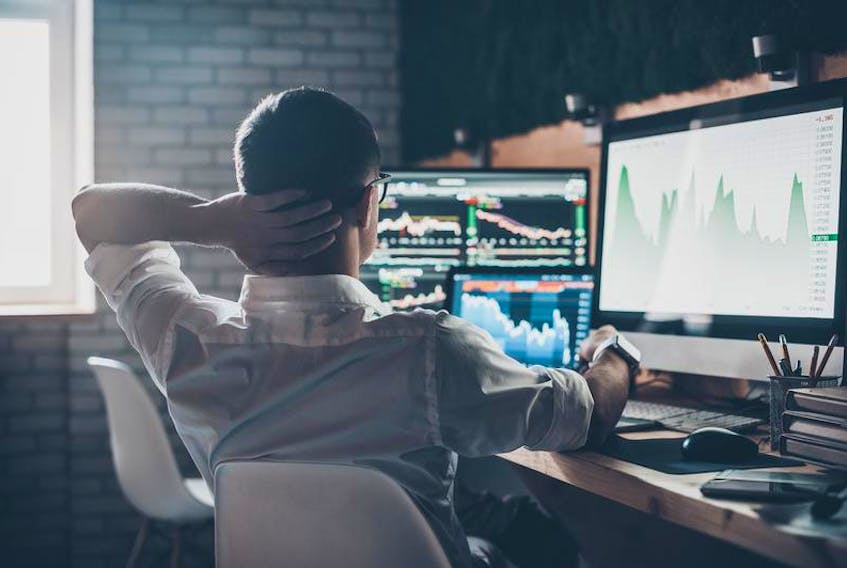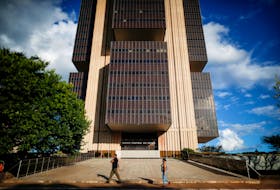Anybody remember December 2018? Let’s refresh: The sky was falling. Investors were taking shelter, cringing over fears of a global economic slowdown, rising interest rates and flattening yield curves, plummeting commodity prices and a trade war between the world’s two largest economies. From Dec. 3 to Christmas Eve, the S&P 500 tumbled more than 15 per cent; the TSX slid almost 10 per cent over the same period. It was one of, if not the, worst December for investors since the Great Depression.
And it was only three months ago. Yet a quarter, it seems, can make a world of difference. Markets have recovered, and then some. Since Dec. 24, the TSX has gained almost 18 per cent; the S&P 500 is up more than 20. Europe in trouble? The EuroSTOXX 50 is up almost 15 per cent. Emerging market economies struggling with a strong greenback? The MSCI EM index is up more than 12 per cent. China entering a growth recession? The Shanghai index has gained more than 22 per cent.
Goodbye, Blue December.If you bought a bunch of equities on Christmas Eve — good for you! It takes guts to be that optimistic. The question now, though, is whether optimism is still justified, and whether the markets have vee
red too far towards risk-on and entered a new phase — of complacency.
This is not to suggest there was no reason behind the recent recovery, which in some ways was predictable even in the depths of the correction. The Federal Reserve hiked its target rate in mid-December, but also hinted that it was approaching some kind of neutral; the hint was confirmed in January, when chair Jerome Powell out-and-out stated that the Fed would be patient in further raising rates. As for trade, there were signs of thawing throughout December: the U.S. and China agreed to a 90-day ceasefire to start the month, and China started buying American soybeans again a couple weeks later.
Come January, the good news just kept rolling in: China signalled a $100-billion-plus stimulus package, which really got domestic markets moving again, and its officials met with U.S. negotiators twice to discuss a trade solution. In late February, President Donald Trump said he would extend the tariff truce past the original March 1 deadline. That obviously isn’t a guarantee of tangible progress — but delay is better than disaster, as far as the market is concerned. (It’s a view investors seem also to be taking of the never-ending Brexit saga.)
So markets have recovered — and the volatility that defined the year-end selloff has largely gone missing. The CBOE Volatility Index, or VIX, which spiked on Dec. 24, has fallen back to its historical low range. The volatility is also less volatile: the so-called VVIX, which measures the 30-day expected volatility of the VIX, has retreated by about a third since Christmas.
Certainly, the Fed’s move Wednesday to remove further 2019 rate hikes from its projections — down from two in December — will paste a veneer of permanence over the market smoothness. But absolute calm might be a dangerous bet.
For one thing, the markets now seem to be betting on policy backstops to a global economy that seems to be sputtering. Whether the Fed pauses or Beijing spends, the underlying reality remains that things are slowing down. Fed officials lowered their GDP growth projections this week to 2.1 per cent for 2019, which would be a percentage-point lower than last year. China is still on course to slow: official growth projections would put economic expansion at its weakest pace since 1990 — again. (Its 6.6-per-cent rate last year already hit that mark; the upper range of official 2019 forecast is 6.5 per cent.)
Other risks remain. Sure, it looks like there is progress in the U.S.-China trade talks — why else would they still be talking? But we are in the era of personality-driven policy, and those talks are being overseen by two powerful and (at least in Trump’s case) volatile personalities. Anything could still happen — consider the abrupt end of the love affair between Trump and Kim Jong Un in Vietnam. Even if there is a deal, the wounds the trade war has opened, and the underlying technological conflict between the U.S. and China, could well be an irritant to the global economy for years to come.
And then there’s Brexit — enough said.
In short, a lot could still go very wrong in the world, and the more calm markets get, the greater the chance they are underpricing risk. One group, at least, seems to be taking a more cautious approach. According to the most recent monthly survey by Bank of America Merrill Lynch, global fund managers are on the defensive, loading up on cash and cutting equity exposures to the lowest levels since 2016.
It’s worth noting that the BoAML survey is often considered a contrarian indicator — and with global fund managers putting money on the sidelines, it will be taken by some investors as a screaming signal to bet on equities. But this time around, with so many factors still in play, the more cautious souls might turn out to be right.
By Joe Chidley
Copyright Postmedia Network Inc., 2019









